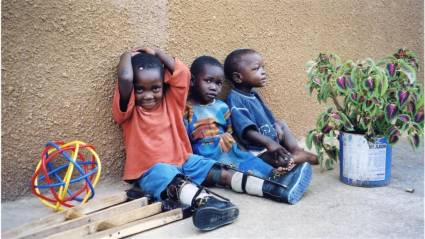Our Work
Special Education Policies During COVID-19
Lessons from a Survey of United States School Districts

Throughout the world, school closures due to the COVID-19 pandemic posed particular challenges for ensuring students with disabilities' right to education.
In the spring of 2020, the COVID-19 pandemic caused many school districts both in the United States and around the world to transition rapidly to partial or complete remote learning modalities. These disruptions affected all children’s education, but students with disabilities (SWDs) were particularly at risk because of the challenges to providing accessible supports and services through remote teaching programs. Indeed, numerous reports indicated that SWDs, their families, and caregivers faced myriad barriers to accessing quality educational and related services due to school districts’ rapid transitions to remote learning. Importantly, as the Department of Education clarified early in the pandemic, despite the practical hurdles school districts were facing, their obligations under the Individuals with Disabilities Education Act (IDEA) remained in place.
To understand how school districts were addressing these challenges while fulfilling their IDEA obligations, HPOD collaborated with colleagues from the University of California Los Angeles’ WORLD Policy Analysis Center to use a sample of 24 U.S. school districts representing a range of student enrollments, per pupil spending, and high and low COVID-19 case rates to examine if and how districts adapted their instructional models and service policies to meet the educational needs of SWDs between August of 2020 and February 2021. We reviewed publicly available information to assess school districts’ approaches to instruction and related service provision for SWDs.
We found substantial variation across school districts in their approach to remote instruction, compensatory services, and whether SWDs were prioritized for returning to the classroom before other students. We found that in general, school districts’ COVID-19 responses for SWDs included one or more of the following adaptations:
- Individualized Education Programs (IEPs) for remote or hybrid models;
- Distance Learning Plans (DLPs) for how to implement the IEP remotely;
- Compensatory or “recovery” services to address learning loss; or
- Prioritized SWDs to receive in-person instruction and/or services within hybrid models.
However, no two districts we surveyed adopted the same combination of strategies, despite being similarly situated in terms of either resources, population size, or community spread rates. Also, only slightly more than half (55%) of districts that provided remote-only instruction to SWDs for at least 1 month adopted more than one of the four above-mentioned strategies, raising important questions about whether districts’ adaptation plans were sufficiently comprehensive to meet SWDs’ educational needs. Further, districts varied substantially in the information they provided to students, families, and caregivers regarding DLPs, changes to IEPs, and related service delivery. Finally, we found disparities in the extent to which the needs of SWDs were addressed, even among similarly situated districts, indicating a clear need for federal guidance on strategies to meet IDEA requirements for quality education of SWDs during pandemics and other prolonged periods of disruption.
Our analysis highlights the need to develop minimal standards for meeting the educational needs of SWDs during school closures as well as to design policies to brunt the effects of educational disruptions for all students in future public health crises. We believe our survey findings provide support for developing federal guidelines that address: 1) when should in-person services be continued as essential services; 2) prioritizing SWDs for in-person services when districts are using hybrid models; 3) the most effective modalities for providing remote services to SWDs when in-person is not possible; and 4) effective ways to ensure SWDs receive compensatory services after disruptions.
Clearly, adapting in real time to the pandemic in the absence of reliable federal guidance posed novel challenges to school districts of all shapes and sizes. We hope that the attached policy brief might help to capture that experience so that administrators, policy-makers, researchers, and other important stakeholders can work together to build resilient practices so that SWDs aren’t left behind in the future.


